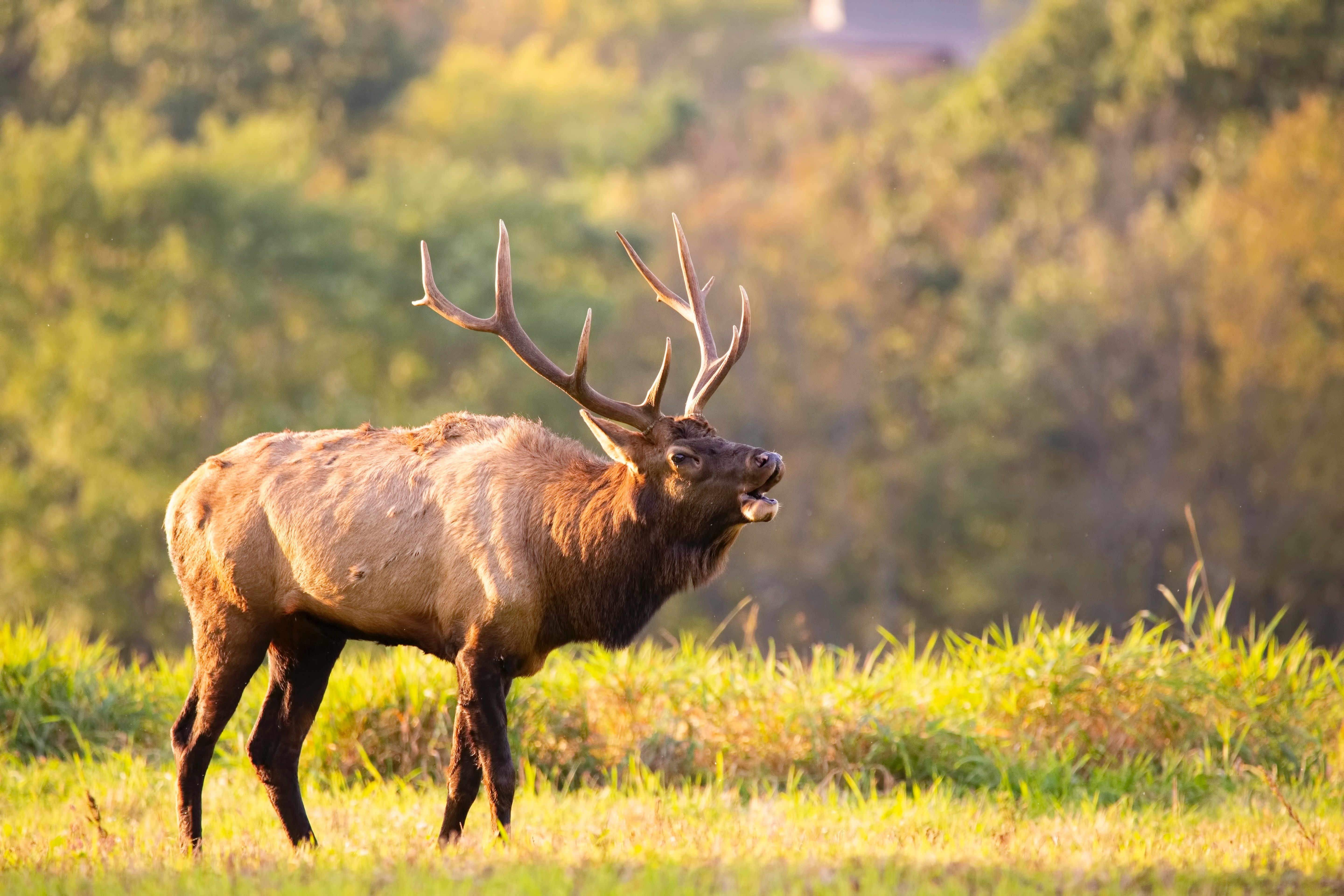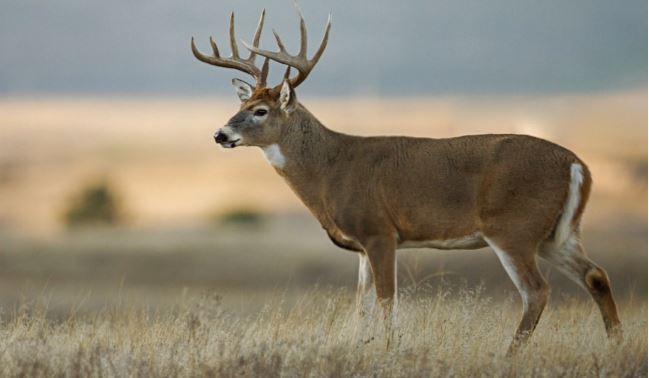With general archery seasons wrapping up in most parts of the state and deer and elk rifle seasons just around the corner, here is some helpful information to help temper hunters' expectations.

(VIDEO): Here's what deer and elk hunting will look like in 2023
A quick-hitting summary for what to expect this October and November.
Overview
Recall back in late August, we put out the annual deer and elk hunting outlook. While the conditions for this year’s deer and late-elk seasons have not changed since its release, this guide is meant to be more of a quick-hitting summary for what to expect this October and November.
Hunters can expect deer and elk hunting to be similar to last year, but hunters in eastern Idaho will likely see firsthand the effects of a brutal winter that hit mule deer hard. Elk herds remain stable to increasing in most of the state; white-tailed deer in the Clearwater area could see a modest bump as herds start to recover from the deadly 2021 outbreak of epizootic hemorrhagic disease; and as most are aware by now, last year’s winter wreaked havoc on eastern Idaho’s mule deer population, particularly fawns.
From a statewide perspective, Idaho’s deer and elk herds remain healthy and resilient despite those setbacks, and statewide populations remain within traditional fluctuations.
Elk hunting is probably the best news with herds and harvests remaining steady over the last decade. Hunters have harvested above 20,000 animals for nine years in a row, and in 2022, hunters took home 20,952 elk, roughly a 3% increase from 2021.
Statewide whitetail harvest, most of which comes from the Panhandle and Clearwater regions, have seen a substantial drop since the all-time record in 2015, and last year’s harvest was about 21% below the 10-year average. Recent history has shown a fairly quick recovery after EHD outbreaks, and it remains to be seen whether that will be reflected in the 2023 whitetail harvest, but there are positive signs.
It's hard to call Idaho’s mule deer situation a half-empty or half-full scenario, but what can be said is it could have been worse. One of the most severe winters on record hit the east side of the state roughly along the Wyoming and Utah borders, and no sugar-coating this one: Deer hunting there is going to be challenging.
But outside of there, it was a fairly average winter in the remainder of Idaho’s mule deer country, and hunting should be similar to last year.
Last Year’s Harvest
In 2022, hunters harvested 20,952 elk, 23,588 mule deer and 19,182 white-tailed deer. Elk harvest was up 3% over 2021, while combined deer harvest saw about a 10% drop. Hunter success rates in 2022 were 23% for elk, 29% for muleys and 38% for whitetails.
For the full 2022 deer and elk harvest stats, check out this earlier story.

Elk Hunting
Overall, the numbers for Idaho elk are once again looking steady and impressive. Last year marked the ninth year in a row where elk harvest eclipsed 20,000, which ties the all-time state record for consecutive years of 20,000-plus elk harvested, set in the mid-1990s.
Fish and Game’s Deer and Elk Coordinator Toby Boudreau believes we will see much of the same, if not better conditions, for elk this fall.
“Overall, elk populations are looking good,” Boudreau said. “Elk are a lot more resilient than deer when it comes to harsh winters, and calf survival stayed relatively high through May.”
Last winter’s 91% cow and 72% calf survival — in units where cows and calves are collared and monitored — is right in line with that range and indicates a growing elk herd. (By comparison, in recent years, calf survival rates ranged from a low of about 52% to a high of 84%).
Overall, there remains plenty of elk for hunters to pursue in most regions of the state, including lots of general hunting opportunities. Elk hunters need to be diligent at finding areas where elk want to be, and not dwell in areas where the hunters want them to be, but the elk aren’t there. Elk herds are highly nomadic, and hunters need to be as well.
Last Year’s Numbers
- Total elk harvest in 2022: 20,952
- 2021 harvest total: 20,396
- Overall hunter success rate: 23%
- Antlered: 11,084
- Antlerless: 9,868
- Taken during general hunts: 12,988 (18% success rate)
- Taken during controlled hunts: 7,964 (43% success rate)


Mule Deer Hunting
“Before last winter hit, we’d been seeing steady growth in mule deer herds in southeast Idaho,” said Boudreau. “So much so that we were ready to propose additional antlerless hunt opportunities for the 2023 fall season.”
But by early January, it was clear Fish and Game was facing an extraordinary winter, and despite a large effort by staff and volunteers to emergency feed deer and elk, a lot of animals were lost due to deep, prolonged snow and frigid temperatures that stretched into spring.
During March season setting for 2023-24, Fish and Game wildlife managers chose to eliminate many proposed antlerless hunts.
Boudreau added that the hard winter could set herds back several years, and the department will continue to monitor the effects in the upcoming years.
Outside of eastern Idaho, mule deer survival was about average across most of the state, but considering how important eastern Idaho is to mule deer hunters, the effects will likely be reflected in a smaller statewide mule deer harvest this fall.
Hunters can expect to see fewer fawns and two-point bucks in those hard-hit areas, and smaller herds in general. Mule deer are resilient, and eastern Idaho’s herds will likely recover over time, assuming the next few winters are closer to normal.
Mule deer hunters are likely to have a smaller statewide harvest this fall, and expectations should be low in eastern Idaho and tempered elsewhere. Yes, there should still be plenty of mule deer available for hunters, and traditionally productive units outside of eastern Idaho will continue to be productive, but mule deer hunting will remain well below the boom years from 2014-16.
Last Year’s Numbers
- Total mule deer in 2022: 23,588
- 2021 harvest total: 26,086
- Overall hunter success rate: 29%
- Antlered: 19,596
- Antlerless: 3,991
- Taken during general hunts: 17,395 (26% success rate)
- Taken during controlled hunts: 6,243 (51% success rate)


White-tailed Deer Hunting
Could this be the year whitetail hunting starts to bounce back after a sharp decline? Remains to be seen, but signs are encouraging.
It’s worth pointing out that the spike in overall deer and elk harvest during the 2020 and 2021 seasons was an anomaly, driven by a steep increase in hunters during the pandemic. While still impressive, it’s unlikely we’ll see that level of harvest moving forward.
Although down slightly from 2021 (39.5% success rate), the percentage of successful hunters is still in line with most years in the last 10 years.
Boudreau says that hunters can still expect to find stronger numbers of whitetails in and around the Clearwater Region but will likely find fewer deer in lower-elevation areas that were hit hard by EHD in 2021.
Alternatively, lower elevations in the Salmon River and Snake River corridors are proving to have ever-increasing amounts of whitetail, while still relatively low densities; hunting them in these locations can have challenges of their own.
For fall 2023, whitetails are continuing to rebound in the Clearwater and are looking healthy statewide.
“We’re still about 2-3 years out from a full recovery,” Boudreau said. “But they’re over the hump.”
Overall, Idaho’s white-tailed deer population is looking good, including those populations within the Clearwater Region. Fish and Game wildlife staff will continue to monitor the EHD situation among deer and elk populations during the summer and fall, but so far, there have been no signs of EHD resurfacing.
NOTE: Hunters in Units 14-15 are reminded that testing for chronic wasting disease is mandatory, and they must abide by other rules regarding hunting in CWD management zone (see details below).
Last Year’s Numbers
- Total white-tailed deer in 2022: 19,182
- 2021 harvest total: 21,418
- Overall hunter success rate: 38%
- Antlered: 12,928
- Antlerless: 6,254
- Taken during general hunts: 17,790 (40% success rate)
- Taken during controlled hunts: 1,391 (46% success rate)

Mandatory Hunter Reports
Hunters must report 10 days after harvest, or if the hunter did not hunt or harvest (deer, elk, and pronghorn only), 10 days after the closing date of their season for each tag purchased.
